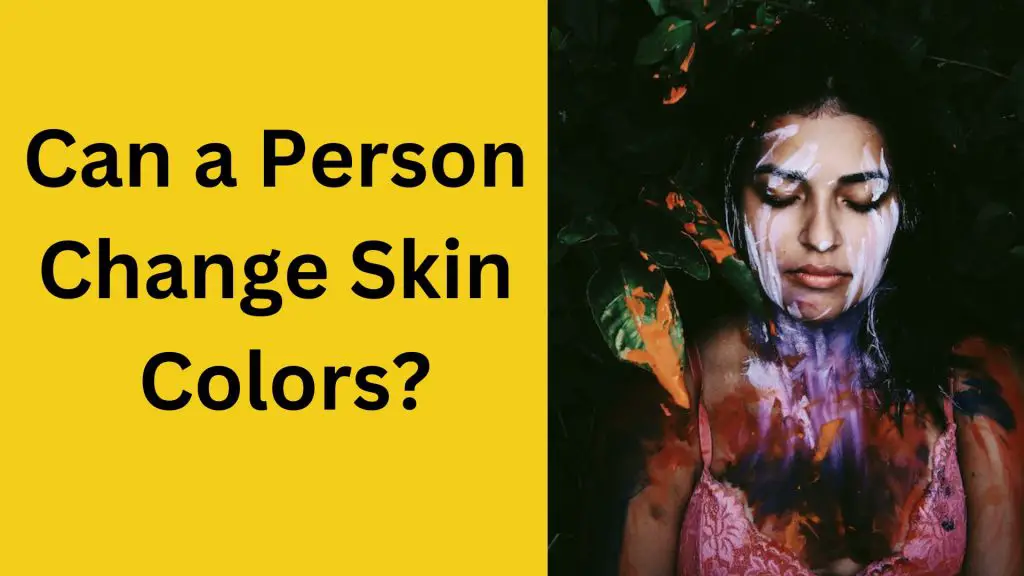In this exploration of fair skin meaning, often the subject of fascination and admiration, holds a unique place in our perception of beauty. But what exactly does “fair skin” mean, and why does it hold such significance in diverse cultures around the world?
In this article, we’ll dive deep into its definition and characteristics. We’ll uncover the historical and contemporary associations that have elevated fair skin to a status symbol. We’ll also examine how different cultures view and celebrate this distinctive skin tone.
What Does Fair Skin Mean?
Fair skin, with its delicate and light complexion, has long been a subject of fascination. But what exactly does fair skin signify, and what sets it apart from other skin tones? Let’s delve into the meaning of fair skin and its unique characteristics.
Fair Skin: A Definition
Fair skin is characterized by its relatively light complexion. It is often associated with individuals who have less melanin, the pigment responsible for skin, hair, and eye color. Fair-skinned people may have a tendency to burn easily in the sun and may experience greater sensitivity to UV rays. This sensitivity often necessitates special care and attention to protect the skin from sun damage.
The Fair Skin-Light Hair Connection
One common association with fair skin is its connection to light or red hair. This combination is sometimes referred to as the “English rose” look. Fair-skinned individuals often have lighter hair, which complements their complexion, creating a unique and aesthetically pleasing appearance.
Fair skin’s connection to light or red hair often adds to its allure, making it a desirable trait in various cultures. This distinct pairing of fair skin and light hair contributes to the perception of fair skin as a symbol of beauty.
The Cultural Aspect of Fair Skin
Fair skin is not just a matter of physical attributes; it’s deeply entwined with culture and societal perceptions. This section explores how the meaning and significance of fair skin vary across different parts of the world and throughout history.
Perceptions of Fair Skin Around the World
The concept of beauty is incredibly diverse, and this is particularly true when it comes to skin tone. In many parts of Asia, particularly in countries like India, fair skin has historically been associated with high social status and desirability. In contrast, in Western cultures, tanned skin has often been preferred as it symbolizes an active, outdoor lifestyle.
It’s essential to recognize that these perceptions are culturally influenced and can change over time. Fair skin might be highly sought after in one culture and less emphasized in another. The global beauty industry often adapts to these regional preferences, offering a wide range of products and treatments to cater to different desires.
Read more about the dominating perception of light skin.
Historical and Contemporary Associations
Throughout history, fair skin has held a position of privilege in many societies. In some cases, it was an indicator of a life free from manual labor or outdoor work, signifying social status and wealth. As a result, fair-skinned individuals were often considered more attractive and desirable.
In contemporary times, while perceptions have evolved, fair skin still retains its allure. The beauty industry continues to promote products and practices for achieving and maintaining fair skin. The desire for fair skin has also given rise to concerns about skin damage, especially from excessive sun exposure.
Understanding the historical and contemporary associations with fair skin can shed light on the complex dynamics at play in our beauty ideals.
The Distinction Between Fair Skin and White Skin
To appreciate the significance of fair skin fully, it’s important to clarify the distinction between fair skin and white skin. These terms are sometimes used interchangeably, but they have unique connotations and are subject to cultural interpretation.
Fair Skin vs. White Skin
Fair skin typically refers to a light complexion, often with a tendency to burn rather than tan when exposed to the sun. It can be found in various racial and ethnic groups, not limited to one specific background. Fair-skinned individuals may have varying undertones, from pinkish to golden, making each person’s fair skin unique.
In contrast, white skin is often used to describe individuals of European descent, who naturally have a lighter skin tone. It’s essential to recognize that not all individuals with fair skin are of European origin, and not all individuals with white skin have fair skin. These terms should be used with sensitivity, as they can carry historical and cultural implications.
Popular Understanding of Fair and White Skin
The popular understanding of these terms can vary from one culture to another. In some societies, fair skin may be highly prized and equated with beauty, while in others, white skin may hold a dominant position in the concept of attractiveness. These ideals are deeply rooted in historical and cultural contexts.
The beauty industry, recognizing the diversity of its clientele, offers products and treatments designed to enhance or maintain various skin tones. This inclusivity reflects the changing global landscape and the appreciation of beauty in all its forms.
Achieving Fair Skin
Many individuals aspire to have fair skin or maintain their existing fair complexion. While it’s important to embrace one’s natural skin tone, there are natural methods and remedies that can be employed to achieve or maintain fair skin. Equally vital is the need for sun protection to preserve the fairness of the skin and protect it from harmful UV rays.
Natural Methods for Fair Skin
- Lemon Juice: Lemon juice is a natural bleaching agent due to its high vitamin C content. Applying diluted lemon juice can help lighten the skin gradually.
- Milk and Honey: A mixture of milk and honey can hydrate the skin while promoting a fairer complexion. Honey has natural antibacterial properties, while milk contains lactic acid, which helps in exfoliation.
- Aloe Vera: Aloe vera’s skin-soothing properties are well-known. Applying aloe vera gel can help maintain skin health and radiance.
- Cucumber: Cucumber slices or cucumber juice can provide a cooling effect on the skin and help reduce pigmentation, contributing to fairer skin.
- Turmeric: Turmeric is a traditional remedy for achieving fair skin. A paste made from turmeric and milk or yogurt can help brighten the complexion.
The Importance of Sun Protection
For individuals with fair skin, sun protection is paramount. Fair skin is often more susceptible to sunburn and skin damage due to the lower levels of melanin, which provides natural protection from UV rays. To safeguard fair skin:
- Use Sunscreen: Applying a broad-spectrum sunscreen with a high SPF rating is essential. Reapply sunscreen every two hours when outdoors.
- Wear Protective Clothing: Don clothing that covers the arms, legs, and face, along with wide-brimmed hats and sunglasses.
- Avoid Peak Sun Hours: Try to stay out of direct sunlight during peak hours when UV rays are strongest.
By adopting these practices, individuals can maintain their fair skin and protect it from potential harm due to sun exposure.
Fair Skin in Language and Literature
The concept of “fair” skin has left an indelible mark on our language and literature, reflecting the deep-rooted significance of this aspect of physical appearance. In this section, we’ll delve into the linguistic and literary uses of the term “fair” in relation to skin tone and how this terminology has evolved over time.
The Linguistic Use of “Fair”
In language, people have long associated the term “fair” with the concepts of lightness and beauty. It is used to describe not only skin but also hair and overall physical appearance. Phrases like “fair complexion” or “fair and lovely” reflect the appreciation of lighter skin as a desirable trait. However, it’s important to recognize that linguistic expressions are context-dependent and can vary greatly across different cultures.
Evolution of the Term “Fair”
The perception of “fair skin” in language and literature has evolved over the years. While the term “fair” was historically synonymous with beauty and desirability, contemporary attitudes have diversified. Modern literature and media often emphasize the celebration of diverse skin tones, promoting a more inclusive and nuanced concept of beauty.
As societies become more multicultural, there is a growing recognition that beauty comes in all shades. Authors, poets, and artists are now exploring and celebrating the beauty of various skin tones, fostering a richer and more inclusive understanding of what it means to have “fair” skin.
The Varied Perceptions of Fair Skin
The appreciation and significance of fair skin vary widely across cultures and regions, reflecting the rich tapestry of global beauty standards. In this section, we’ll highlight the diverse perspectives on skin tone and share anecdotes and quotes from different cultures to shed light on this complex and fascinating subject.
Beauty Standards Around the World
Beauty ideals are highly subjective, and one culture’s definition of attractiveness may vary significantly from another’s.. Let’s explore how different regions perceive fair skin:
- Asia: In countries like India and Japan, fair skin has historically been linked to beauty, social status, and marriage prospects. Skin-lightening products are often popular.
- Western Societies: In many Western countries, people traditionally favored tanned skin, associating it with an active, outdoor lifestyle. However, there is a growing appreciation for diverse skin tones.
- Africa: Many African cultures have long celebrated deep, rich skin tones. In these societies, people place less emphasis on skin lightening, as they hold a strong appreciation for natural beauty.
Anecdotes and Quotes
To provide a more personal perspective on the subject, let’s consider some anecdotes and quotes that reflect the varied attitudes toward fair skin:
- India: “Many often view fair skin as a symbol of purity and beauty. It’s a common saying here that ‘fair is lovely.’ While this perception is evolving, fair skin remains a desirable trait.”
- Africa: “In many African cultures, people celebrate dark skin as a source of pride and beauty. We say, ‘Black is beautiful.’ This reflects our pride in our rich heritage and the beauty of our natural skin tones.”
- Western Society: “In the Western world, there’s a growing recognition that beauty comes in all shades. People are embracing diversity and realizing that there’s no one ‘ideal’ skin tone.”
This diversity of opinions and cultural perspectives underlines the complexity of beauty standards and how they evolve over time. The important message here is that every skin tone is beautiful in its own way, and the world’s appreciation of diversity is growing.
Conclusion
In our exploration of fair skin meaning, we’ve uncovered a fascinating tapestry of perceptions, values, and beauty standards that surround this distinct skin tone. From its definition and cultural significance to the evolution of terminology and the diverse global perspectives, fair skin holds a unique place in our understanding of beauty.
It’s important to remember that beauty is multifaceted, and the significance of fair skin varies across cultures and regions. While historical associations and contemporary ideals shape our perception of beauty, a growing recognition is celebrating the importance of embracing diversity.
In closing, we encourage you to appreciate the beauty of diversity in all its forms. Whether you have fair skin or a different complexion, healthy skincare practices and self-confidence should always be your guiding light. Embrace your natural beauty, protect your skin from the sun’s harmful rays, and remember that every shade of skin is uniquely beautiful.
In our journey of exploring about skin, we’ve covered a variety of interesting topics. If you enjoyed this article, you might find the following posts helpful in expanding your knowledge;
Skin Polishing: Reveal Your Best Glow
Preventing Secondary Aging: Effective Strategies
Unlock Radiant Skin: Microneedling London Secrets


